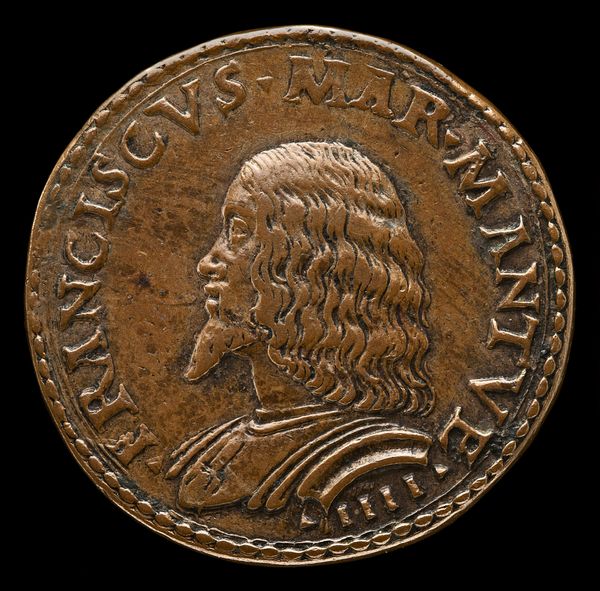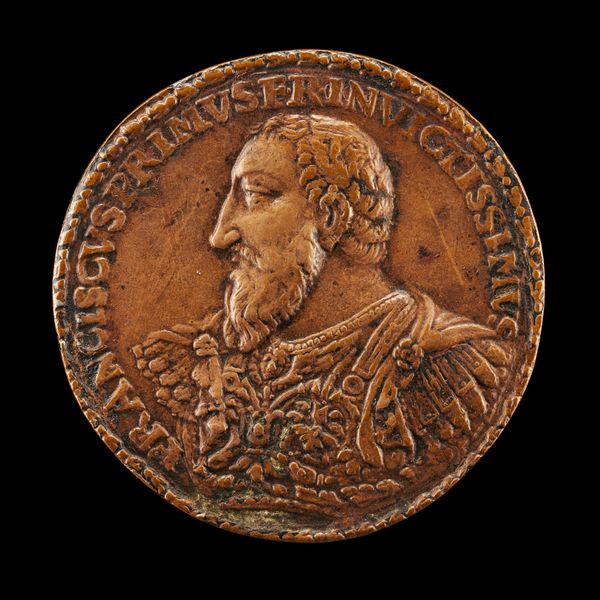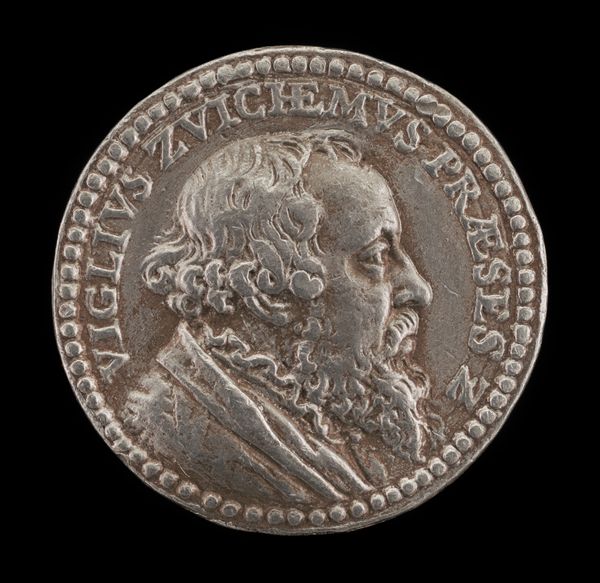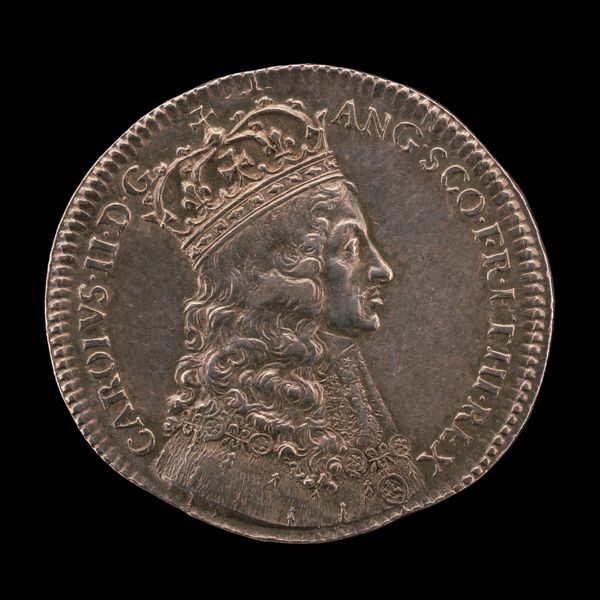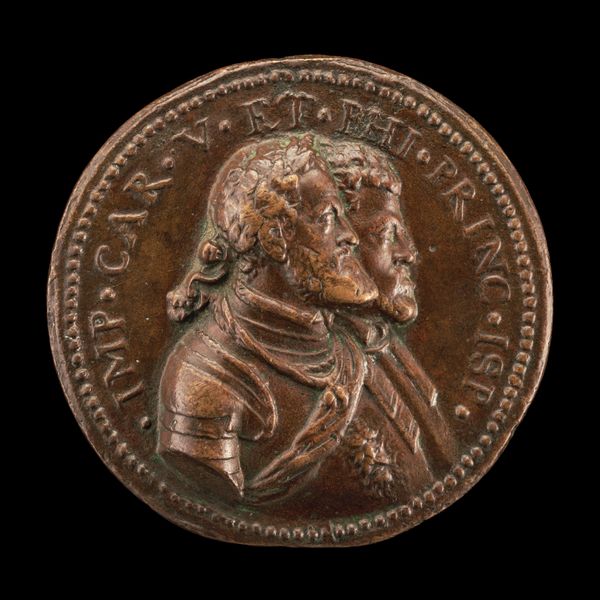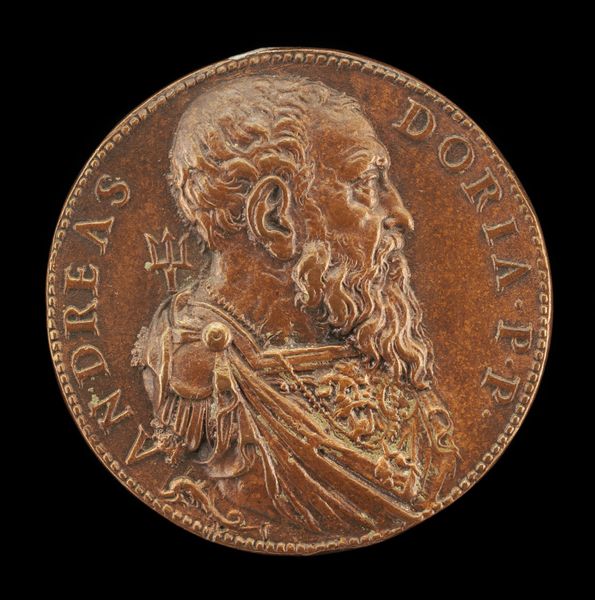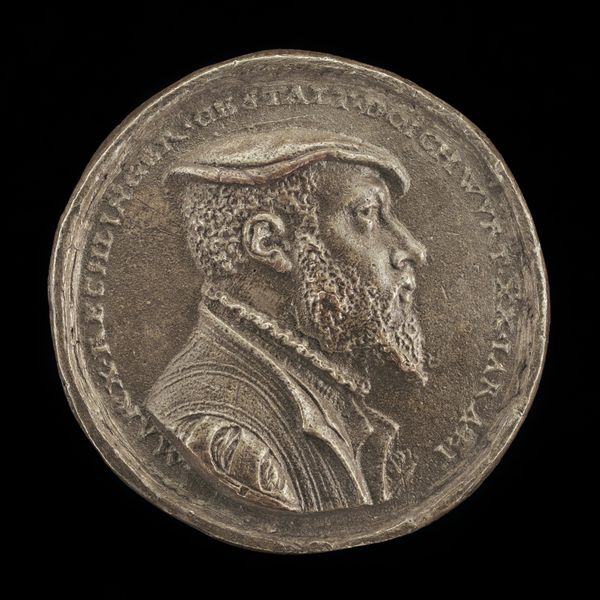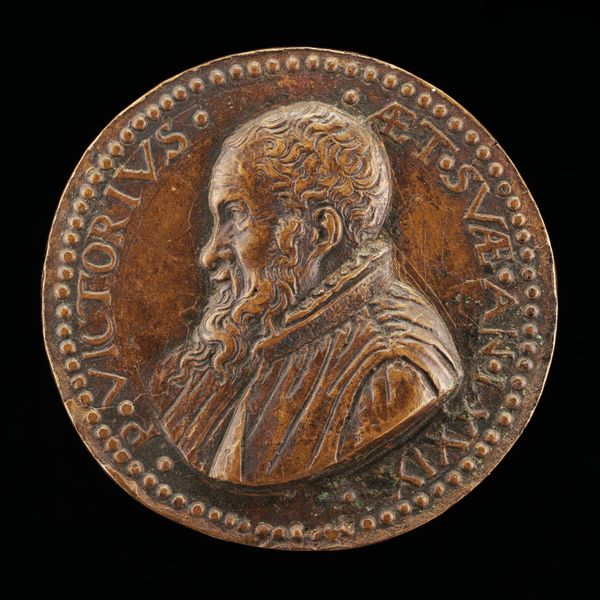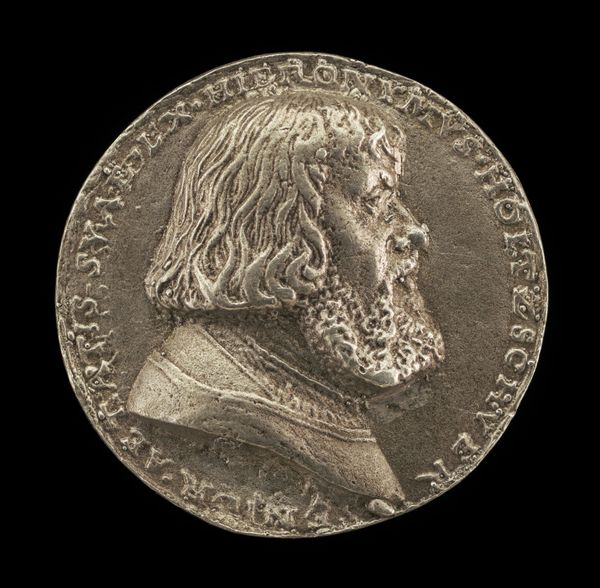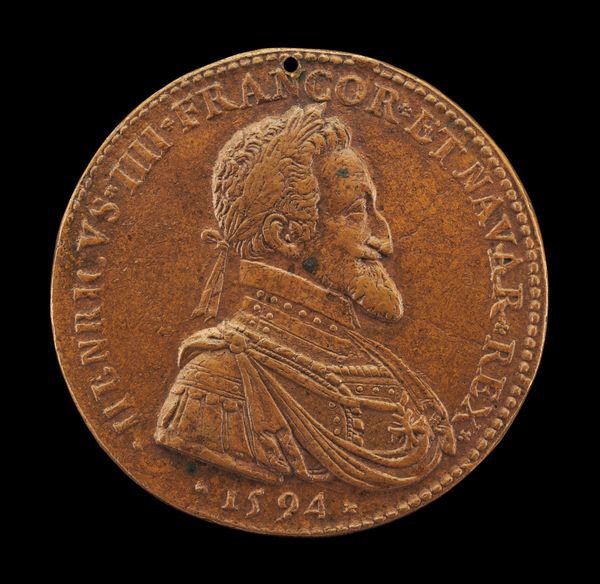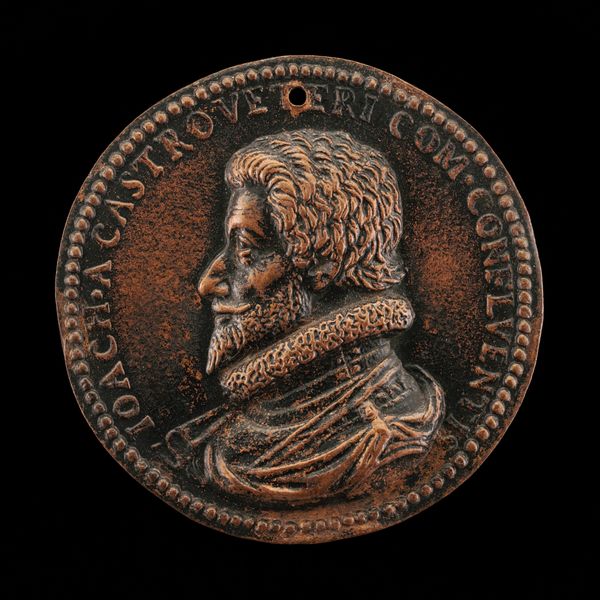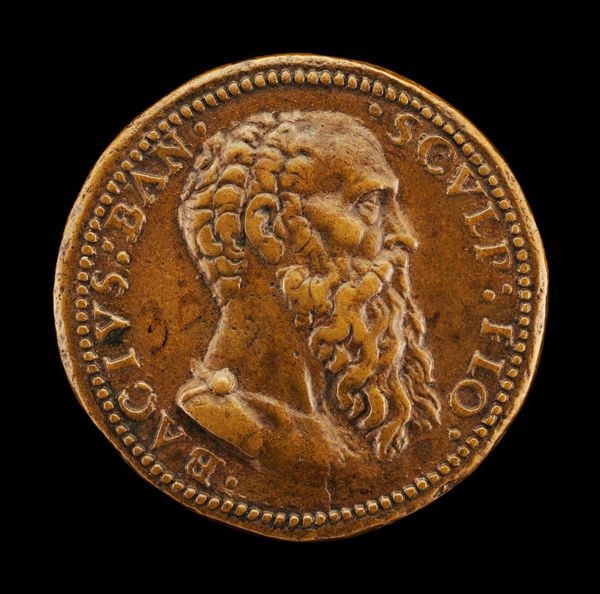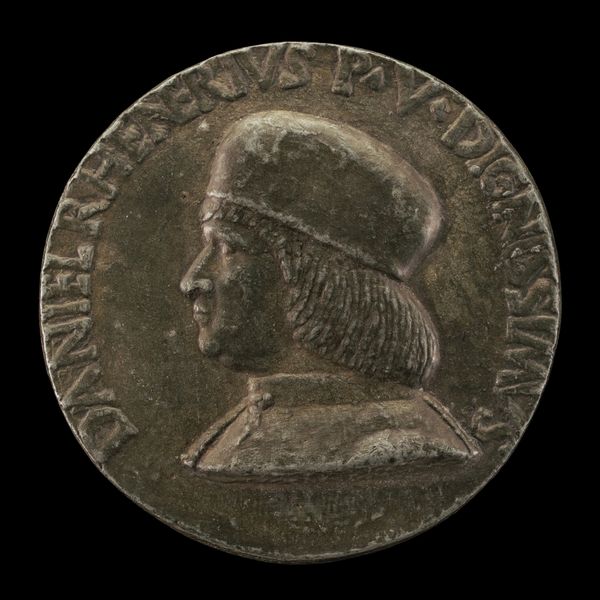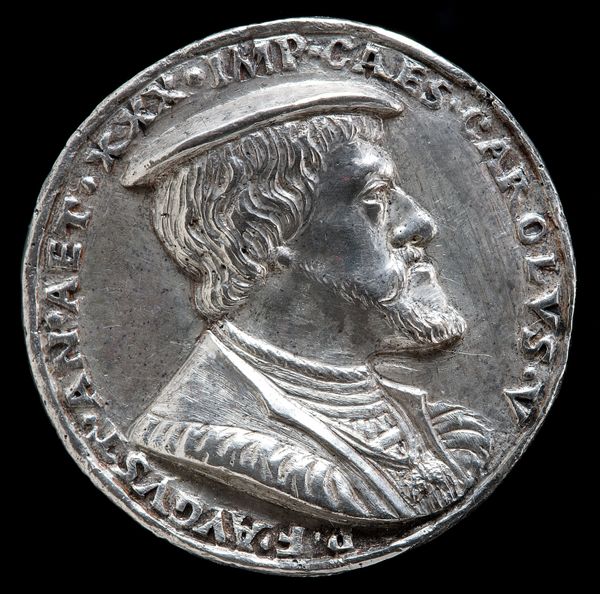![Giovanni Gonzaga, 1474-1525, Condottiere [obverse] by Mea](/_next/image?url=https%3A%2F%2Fd2w8kbdekdi1gv.cloudfront.net%2FeyJidWNrZXQiOiAiYXJ0ZXJhLWltYWdlcy1idWNrZXQiLCAia2V5IjogImFydHdvcmtzL2IxYTI4YWY4LWZkZTEtNGFiMC1iZmNiLTJmNzk2MmQyYmZiZS9iMWEyOGFmOC1mZGUxLTRhYjAtYmZjYi0yZjc5NjJkMmJmYmVfZnVsbC5qcGciLCAiZWRpdHMiOiB7InJlc2l6ZSI6IHsid2lkdGgiOiAxOTIwLCAiaGVpZ2h0IjogMTkyMCwgImZpdCI6ICJpbnNpZGUifX19&w=3840&q=75)
bronze, sculpture
#
portrait
#
medal
#
sculpture
#
bronze
#
11_renaissance
#
sculpture
#
italian-renaissance
Dimensions: overall (diameter): 3.61 cm (1 7/16 in.) gross weight: 17.71 gr (0.039 lb.) axis: 12:00
Copyright: National Gallery of Art: CC0 1.0
Curator: Up next we have a bronze medal portraying Giovanni Gonzaga, a condottiere, dating back to around 1510. The piece offers a fascinating glimpse into Renaissance portraiture. Editor: My immediate impression is the dignity conveyed in such a small format. The artist really captured a sense of gravitas, it’s surprisingly imposing for a medal. Curator: Indeed. Bronze as a medium was interesting for creating multiple casts, disseminating power through repeatable imagery and offering access beyond unique painting or sculpture. Its scale facilitates this wider circulation. Think about where this medal may have been carried. Editor: Absolutely. And look at how skillfully the artist has manipulated the bronze. The texture in his hair, the subtle modeling of the face. It's almost sculptural in its depth and refinement, and note how the inscription also plays a part in the medal’s composition. Curator: Medals like these served as a kind of propaganda, reinforcing social status and projecting strength. Who was producing these medals, under whose patronage and for what occasions? Editor: I think you are right; it certainly elevated Gonzaga, portraying him as an individual worthy of remembrance. His very image, rendered in metal, served as currency, both literally and figuratively. There is, without a doubt, power inscribed in that form. Curator: Examining how medals were created during the Italian Renaissance provides insights into the prevailing cultural and political structures of the time. This speaks to patronage networks and craft production in the Renaissance workshop, underscoring the connection between art, commerce, and class. Editor: The level of detail, for instance, it transforms the material, giving it a presence that defies its compact form. Bronze is quite humble, but consider its permanence; it suggests something lasting, that endures far beyond a person’s life. Curator: Analyzing medals like this enables us to reflect upon what characteristics and skills societies seek to valorize at specific historical junctures. The materials, techniques, and means of distribution are crucial factors to consider. Editor: It’s true; viewing such a tactile work leaves one wondering how it would have been to handle.
Comments
No comments
Be the first to comment and join the conversation on the ultimate creative platform.
